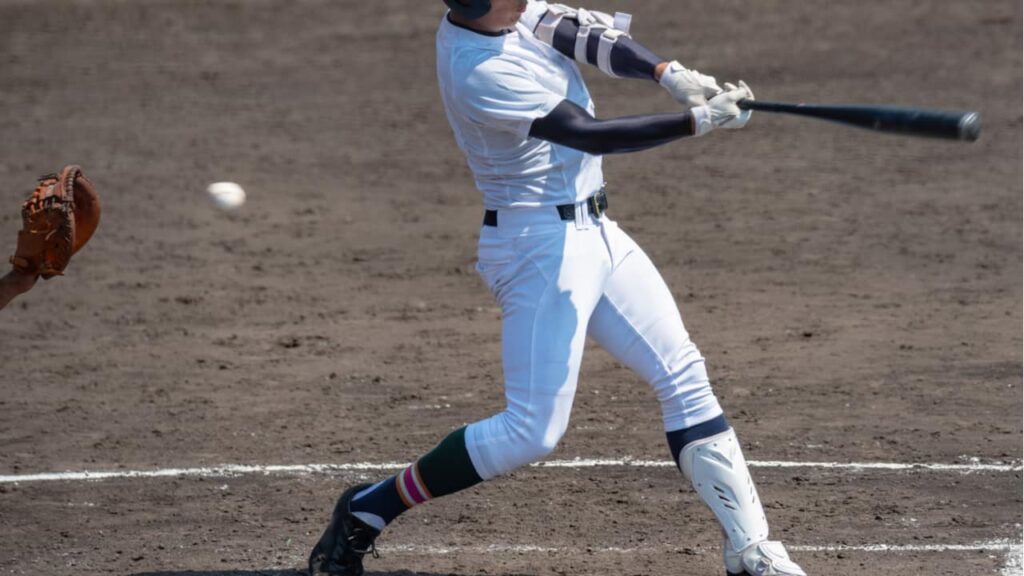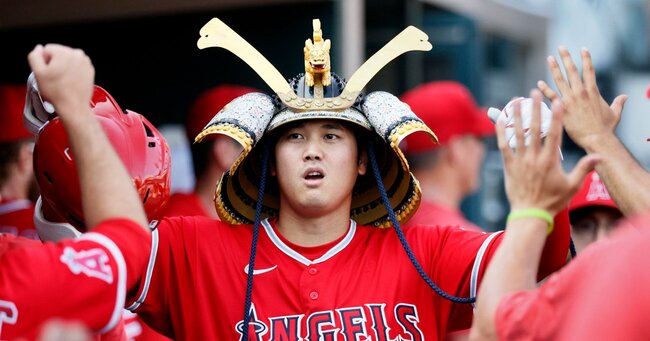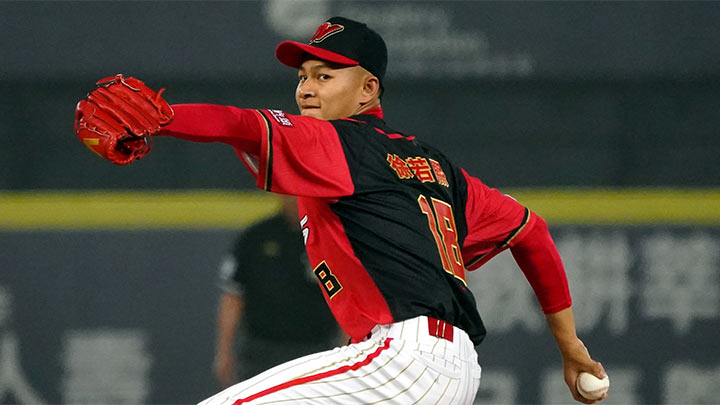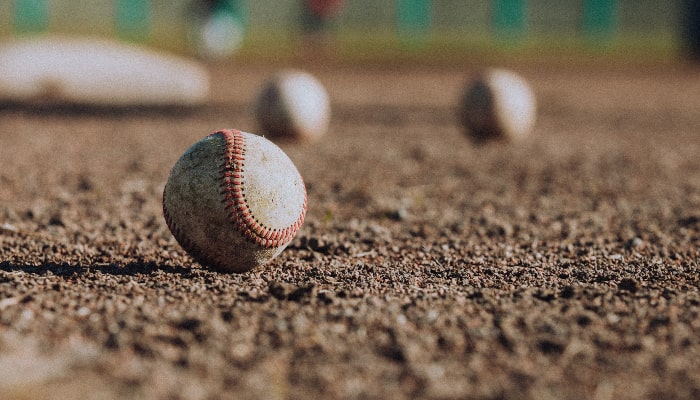
In baseball games, you may hear the term “jahi.”
A foul fly is when the ball hit by the batter flies into foul territory rather than fair territory.
This term is one of the important factors that greatly influence the flow of the game and strategy.
In this article, we will explain in detail the basic definition of a foul fly, why it occurs, its impact on the game, and even countermeasures from the perspectives of both the batter and the defense.
A foul fly is often overlooked as just a foul ball, but it can actually be an important play that directly affects the outcome of a game.
In particular, when there are runners on base or in the final stages of a game, the way a foul fly is handled and the strategy used can often determine the outcome of the game.
The following headings will provide you with information to help you learn more about the foul fly and gain a better understanding of the game.
目次
Basic information on Yabiki
In a baseball game, the “foul fly” is one of the plays that has a major impact on the flow and strategy of the game.
We will explain in detail what a foul fly is, why and under what circumstances it occurs, and how it differs from other flies.
Definition and pronunciation of ‘Yabi’
Jahi is pronounced “jahi” and is called “foul fly” in English.
This refers to the phenomenon where the ball hit by the batter flies into foul territory rather than fair territory.
Specifically, it refers to a fly ball that flies outside the foul lines on either side of home plate.
A foul fly can result in an out or it can be counted as a foul ball.
Basically, a foul fly is called an out if the defender catches it, but if it lands in foul territory it simply counts as a foul ball.
Reasons and circumstances in which foul balls occur
There are many reasons why a foul fly can occur, but the most common are:
-
Misalignment of the batter’s timing : If the batter’s swing timing is not right, the ball may go off center and fly into foul territory. This is especially true for fastballs and curveballs.
-
Swing Angle : The angle of the swing that the batter makes when hitting the ball can also contribute to a foul fly. Swinging upwards will likely send the ball flying outside the foul lines.
-
Ball trajectory : Pitchers may aim for a trajectory that will lead the ball into the foul zone. Balls thrown on tricky trajectories, especially on the inside or outside corners, are difficult for batters to hit and often result in a foul fly.
The difference between a foul fly and other flies
The foul fly is different from other flies in several ways.
Here we clarify the difference.
-
Fair fly : A fair fly is a fly ball that flies within fair territory. If it is caught within fair territory, it is an out, and if it hits the ground, it is a hit. Unlike a foul fly, a fair fly often has a direct impact on the progress of the game.
-
Pop fly : A pop fly is a fly ball that is hit by a batter and goes up high and then lands a short distance within fair territory. It is usually caught by an infielder. A pop fly is also a play within fair territory, and is distinct from a foul fly.
-
Line drive : A line drive is a hit that is hit low and fast, resulting in a hit that is within fair territory, and unlike a foul fly, it is more likely to be a hit as the defense has less time to react.
In this way, a foul fly is a fly ball that occurs in baseball under specific circumstances, and is heavily dependent on the skills and tactics of the batter and pitcher.
Understanding foul fly balls is important in understanding the depth of baseball tactics and plays.
For baseball fans and players, understanding the meaning of a foul fly and the conditions under which it occurs will be key to making the most of the game.

The impact of foul fly balls on a game
The foul fly is one of the plays that can have a major impact on the flow and outcome of a baseball game.
There are many situations where a foul fly ball can change the course of a game.
Here, we will take a detailed look at the specific impact that foul fly balls have on a match from three perspectives: cases in which a foul fly ball can change the flow of the match, how to strategically use a foul fly ball, and the impact a foul fly ball has on the outcome of a match.
Cases where a foul fly changes the flow of a game
A foul fly can be a big factor in changing the flow of a game.
For example, if a runner is in scoring position, a foul fly out can have a direct impact on the outcome of the game.
The following cases are typical:
-
Missed Opportunities : When there are runners on base with no outs or one out, if the batter hits a foul fly and the defense catches it, the runner cannot advance and the opportunity is reduced. In such a case, the offensive team may put pressure on the next batter and miss a scoring opportunity.
-
Game-changing defensive plays : When a defender makes a difficult catch, it can change the flow of the game. Sliding catches and diving catches in the foul zone are especially important plays that boost team morale and change the flow of the game.
How to use foul flying strategically
By using foul fly balls strategically, you can diversify your team’s tactics.
Here are some strategic uses:
-
Pitcher’s pitching strategy : In order to get the batter to hit a foul fly, the pitcher may throw the ball to a tricky spot on the inside or outside of the plate. In particular, a high ball aimed at the foul zone is a difficult pitch for the batter and is likely to induce a foul fly.
-
Batting strategy : Batters rarely intentionally aim for foul fly balls, but they may do so temporarily in order to gain ground on the count with foul balls. This can be a strategy used to tire out the pitcher by forcing him to throw more pitches.
The impact of foul fly balls on the outcome of a match
A foul fly can have a direct impact on the outcome of a match.
Below are some specific examples of the impact:
-
Obtaining important outs : In the final stages of a game, a foul fly can be a very important out for the defense when there is only one point difference. Catching a foul fly, especially with the bases loaded and runners in scoring position, can be a big play that can bring your team closer to victory.
-
Losing a run due to an error : On the other hand, if a foul fly ball is not caught in the foul zone and is dropped, it gives the offensive team another chance. This can lead to a loss of a run, and is a major mistake for the defensive team.
As such, foul fly balls are a factor that has a major impact on the flow and outcome of a game.
The strategic use of foul fly balls and the measures taken to prevent them from occurring are key to determining the outcome of a match.
In baseball, understanding and responding to foul fly balls is an essential element in improving a team’s tactics and the quality of their play.

Hitting technique to prevent foul fly
In order to prevent a foul fly, accurate hitting technique is required.
A foul fly is greatly influenced by the batter’s swing, timing, and how well they judge the ball.
Here we will explain in detail the basic hitting techniques to prevent foul fly balls.
Swing Basics and How to Prevent Foul Flying
Mastering the fundamentals of your swing is the first step to avoiding foul hits.
Below, we will explain the basics of swinging and the key points to preventing foul hits.
-
Proper Grip : Holding the bat is important. Holding the bat firmly and keeping your wrists flexible will allow you to react quickly to the ball. Gripping too tightly will result in a stiff swing, which can lead to foul hits.
-
Swing trajectory : The swing trajectory is an important factor in preventing foul fly. The ideal swing is an inside-out trajectory, swinging to push the ball. This makes it easier for the ball to fly into the fair zone and reduces the risk of a foul fly.
-
Bat angle : The angle of the bat also affects the prevention of foul hits. If the angle of the hit ball is too high, it is more likely to fly into the foul zone. When swinging, it is important to keep the bat horizontal and hit the ball perpendicular to the ground.
Ball detection and timing
Judging the ball and swinging at the right time are also important factors in preventing foul hits.
-
Judging the ball : Judging the ball is the technique of hitting balls in the strike zone with confidence. If you swing at a ball outside the strike zone, it will likely be a foul fly. The batter needs to carefully judge the rotation and trajectory of the ball and concentrate on balls in the strike zone.
-
Timing : Swinging with the right timing is key to preventing a foul fly. Swinging too early or too late will miss the center of the bat and induce a foul fly. It is important for batters to repeatedly practice swinging with the right timing to time their pitches.
-
Waiting for the ball : It is also important to watch the ball until the end. If you swing in a hurry, you will often miss the center of the ball. By staying calm and pulling the ball in and swinging at the right time, you can reduce the risk of hitting a foul fly.
Tips to prevent foul fly balls from professional players
Learning from the techniques of professional players can also help prevent foul hits.
Here are some tips you can learn from the hitting techniques of professional players:
-
Barry Bonds Swing Mechanics : Barry Bonds is known for his swing mechanics. He has a very smooth start to his swing and swings the bat all the way to the ball, which helps him land the ball in the fair zone.
-
Ichiro’s Contact Hitting : Ichiro has many hits thanks to his contact hitting technique. He has excellent bat control and is good at hitting the ball right in the center. This technique is very effective in preventing foul fly balls.
-
Shohei Ohtani’s flexible swing : Shohei Ohtani is known for his flexible swing. He adjusts his swing to match the trajectory of the ball and swings the bat at the right time to prevent foul fly balls.
As such, in order to prevent a foul hit, it is important to master the basics of the swing and properly judge the ball and get the timing right.
Furthermore, by learning from the techniques of professional players, you can develop more effective striking techniques.
In order to improve your baseball batting skills, it is important to practice with these points in mind.

How to deal with a foul fly ball from the defensive side
The foul fly is also an important play for the defense.
If the defense can handle the foul fly well, they can turn the tide of the game in their favor.
Here we will explain in detail how to deal with foul fly balls from the defensive perspective, including basic techniques, fielding positioning and movement, and examples of how to respond in an actual match.
Basic techniques for catching foul fly balls
Catching a foul fly requires some basic techniques.
By mastering these techniques, you can improve your defensive accuracy and reduce mistakes during games.
-
Catching form : The form when catching a foul fly is very important. Basically, you need to support the glove with both hands and catch the ball while following it with your eyes. It is important to relax your shoulders and keep them flexible.
-
Footwork : Quick footwork is essential to catching a foul fly. You need to practice your footwork on a daily basis to react quickly to the direction of the ball and move to the appropriate position. Moving backwards and taking a side step are particularly important techniques.
-
Fixing your gaze : When catching a ball, it is important to fix your gaze and not take your eyes off the ball. Especially for high foul fly balls, which are easily affected by wind and lighting, keeping your gaze fixed will lead to a successful catch.
Fielding positioning and movements
Proper positioning and movement are important for catching a foul fly.
This allows you to respond to the ball efficiently.
-
Positioning : It is important to change your defensive position depending on the batter’s batting tendencies and the pitcher’s pitching style. If there are many plays in the foul zone, adjusting your defensive position will make it easier to respond to foul fly balls.
-
Communication : Communication between the defense is also essential. Especially when trying to catch a foul fly ball between the infield and outfield, it is important to call out to each other and clarify who is going to make the catch. This will prevent collisions and missed catches.
-
Approaching the ball : To catch a foul fly, you need to accurately predict the ball’s trajectory and approach it in an efficient route. Approaching the ball head-on as much as possible leads to a more stable catch, rather than approaching it from an angle.
An example of how to deal with a foul fly in an actual game
In an actual match, dealing with a foul fly ball involves utilizing basic techniques and positioning.
Here are some concrete examples.
-
Famous moments from Major League Baseball : In Major League Baseball, there are many scenes where outfielders make amazing catches of foul fly balls near the fence. This requires the skill to grasp the position of the fence and make the catch while avoiding danger.
-
Playing in Nippon Professional Baseball : In Nippon Professional Baseball, infielders sometimes have to catch foul fly balls near the dugout. Catching in a small space requires quick reactions and high concentration.
-
Decisive plays in important games : For example, in important games such as playoffs and finals, a defensive player catching a foul fly and getting an out is an important play that can greatly change the flow of the game. This depends heavily on basic defensive techniques and game experience.
As you can see, the defensive techniques to prevent foul fly balls range from basic techniques to positioning and how to respond in an actual match.
By making full use of these techniques, the defending team can gain an advantage in the game.
Practice your foul fly attacks and it will lead to success in matches.
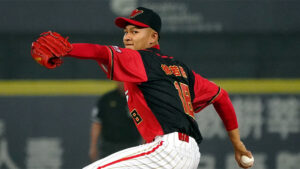
Famous examples of foul flying and lessons learned
In a baseball game, a foul fly can sometimes be the moment that dramatically changes the flow of the game.
Here we will take a closer look at some famous cases of foul fly balls in Major League Baseball and Japanese professional baseball, as well as the dramatic moments they led to and the lessons learned from them.
Famous foul fly scenes in the major leagues
There are many memorable foul fly balls in Major League Baseball (MLB).
These scenes had a major influence on the outcome of the game and are still talked about among baseball fans.
-
Derek Jeter’s Diving Catch : New York Yankees pitcher Derek Jeter’s diving catch against the Red Sox in 2004 is one of the most talked about moments in baseball. He made a difficult catch near the fence, showcasing the importance of playing in the foul zone. It’s a play that epitomizes defensive skill and courage.
-
David Wright’s catch : The New York Mets’ David Wright is also famous for his backside catch in 2005. He made a phenomenal play by catching an irregular fly ball in the foul zone with his backside. This scene shows the importance of being flexible in dealing with unpredictable balls.
Famous foul fly scenes in Japanese professional baseball
Many memorable scenes have also been created in Nippon Professional Baseball (NPB).
These plays had a major impact on the outcome of the game and left a lasting impression on fans.
-
Ichiro’s foul catch : Ichiro’s foul catch during his time with the Orix BlueWave is still talked about among fans. Taking advantage of his wide defensive range and speed, he jumped into the stands to catch the ball, drawing cheers from the crowd. This play shows us the importance of always going all out for the ball.
-
Hideki Matsui’s decisive catch : Hideki Matsui’s famous foul catch during his time with the Giants was also a big hit. He made the catch despite crashing into the fence, changing the flow of the game. This scene shows the importance of decisiveness and strong mentality in defense.
The dramatic moment that resulted from a foul fly and the lessons learned from it
Foul fly balls often produce dramatic moments in a match and contain important lessons.
-
Championship Moment : Derek Jeter’s foul zone play in the 2001 American League Championship Series (ALCS) for the New York Yankees was the deciding factor in the game, showing how defensive skill and cool headed decisions can lead to success at a critical moment.
-
World Series Drama : David Freese’s foul catch for the St. Louis Cardinals in Game 6 of the 2011 World Series led to a dramatic extra-inning victory. The play illustrates the importance of focus and a never-give-up mentality.
Famous examples of foul fly balls like this show us the importance of defensive technique and mental strength.
Through famous scenes from Major League Baseball and Japanese professional baseball, you can rediscover the depth and appeal of defense.
By learning the correct understanding and countermeasures for foul fly balls, you will be able to successfully make important plays that can determine the outcome of a match.

Rules and Judging for Foul Fly Balls
In baseball, the foul fly is one of the plays that has a major impact on the course of a game.
It is important for players and spectators to correctly understand the rules and judging criteria regarding foul fly balls.
Here we will explain the official rules regarding foul fly balls, the judging criteria and the role of the umpire, and provide a detailed explanation of common misconceptions regarding foul fly balls and how to clear them up.
Explanation of the official rules regarding foul flying
The official rules regarding foul fly balls are set out as part of the fundamental rules of baseball.
The main rules are explained below.
-
Definition of a foul ball : A foul fly is a fly ball that flies outside fair territory. If a ball flies outside the foul lines extending from home plate and is caught before touching the ground, it is a foul fly and the runner is out.
-
What makes an out : For a foul fly to be an out, the defensive player must catch the ball without touching the fence or any other obstacle. If the ball can be caught in the foul zone, the play will be recorded as an out.
-
Special Conditions for Foul Catches : If a foul fly is caught before it goes into the fence or stands, it is also an out. However, if a spectator catches the ball after it goes into the stands, the play is invalid and the runner cannot be called out for the foul fly.
Criteria for judging a foul fly and the role of the umpire
The determination of a foul fly depends largely on the umpire’s judgment.
When a foul fly occurs, the umpire will make a decision based on several criteria.
-
Ball trajectory and location : The umpire will check the location and trajectory of the ball. If the ball flies outside the foul lines and is caught before touching the ground, it is called an out.
-
Accuracy of the catch : For a foul fly to be called an out, the defensive player must catch it accurately. The umpire will check that the defensive player made the catch and decide whether the catch was made or not.
-
On or Off the Field : If the ball goes into the fence or into the stands, the umpire will determine whether the play was on or off the field. This will determine whether an out was made.
Common misconceptions about foul flying and how to resolve them
There is a common misconception about the rules regarding foul fly balls.
Here we will introduce some of these misconceptions and how to resolve them.
-
Misconception: All foul fly balls are considered fouls : Many people tend to think that all foul fly balls are considered fouls, but if a defensive player catches it, it is an out. By understanding this point, you can correctly understand the rules for foul fly balls.
-
Misconception: Any ball that goes over the fence is an out : If a foul fly goes over the fence, the play is invalid as soon as a spectator touches the ball. In this case, the ball cannot be called out as a foul fly.
-
Misconception: Catching a foul fly is easy : In reality, catching a foul fly is a difficult play. Catching a foul fly, especially in the foul zone, requires high skill and concentration from the defensive player. Understanding this point will help you recognize the importance and difficulty of defense.
In this way, by correctly understanding the rules and judging criteria regarding foul fly balls, you can gain a deeper understanding of their impact on the flow and outcome of a game.
The role of the referee is also important, and proper judgment is essential to maintaining fairness in the match.
By clearing up the misunderstandings about foul fly balls, you will be able to accurately understand the rules of baseball and enjoy the game even more.

The foul fly is one of the elements in baseball that greatly influences the flow and strategy of a game.
Understanding the terminology and strategies related to foul fly balls will allow you to gain a deeper understanding of how the game unfolds and play more effectively.
Here we will explain in detail the difference between a fly ball and a pop fly, how to compare it with a liner and how to use it strategically, and new hitting strategies that utilize foul flies.
The difference between a fly ball and a pop fly
In baseball, a fly ball and a popped fly are both types of hit in which the ball goes into the air after being hit by the batter, but their nature and impact on play are different.
-
Fly Ball : A fly ball is a ball that hits the bat and goes high into the outfield. Fly balls are usually caught by an outfielder and are an important defensive play. If a fly ball becomes a hit, the batter usually advances multiple bases.
-
Pop fly : A pop fly is a ball that hits the batter and then rises too high into the air and lands in the infield. A pop fly is usually easy to catch by an infielder and is therefore likely to result in an out. A pop fly hit by a batter usually creates an advantage for the defense.
Comparison with Liner and Strategic Use
A liner is a ball that flies fast and on a low trajectory, unlike a fly ball or a pop fly.
A liner is a shot that reduces the defender’s reaction time and is more likely to result in a hit.
-
Characteristics of a liner : A liner is a ball that flies almost horizontally to the ground, and if it lands in the fair zone, it is a hit with a very high probability. The defender needs quick reactions and accurate positioning to catch a liner.
-
Strategic Use : Batters can increase the efficiency of their offense by being conscious of hitting liners. Liners are an effective way to score runs, especially when runners are in scoring position. On the other hand, defenses need to adjust their defensive positions and improve their reaction speed to counter liners.
A new hitting strategy that utilizes foul fly balls
A foul fly is usually considered an advantageous play for the defender, but there are ways to use it strategically.
Below is an example of a new striking strategy.
-
Sticking to foul balls : There is a strategy where a batter intentionally hits foul balls to force the pitcher to throw more pitches and tire him out. Especially in bad count situations, it is important for the batter to stick to foul balls and induce mistakes from the pitcher.
-
Applying pressure : If there are a lot of foul fly balls in the foul zone, you can apply pressure to the defense. This strategy is particularly effective in stadiums where it is difficult to catch balls in the foul zone. By continually hitting the ball into the foul zone, the batter can distract the defense.
-
Shaking up the pitcher : By aiming for a foul fly, you can shake up the pitcher psychologically. If the batter is persistent in hitting the foul ball, the pitcher is forced to throw within the strike zone, which makes it easier for the batter to make a missed shot.
In this way, by understanding the terminology and strategies related to foul fly shots, you can gain an advantage in the game.
Understanding the differences between fly balls, pop flies, and line drives, and how to strategically use each, as well as implementing new batting strategies that utilize foul fly balls, will broaden the scope of your baseball play.
Use this knowledge to play more effectively.
